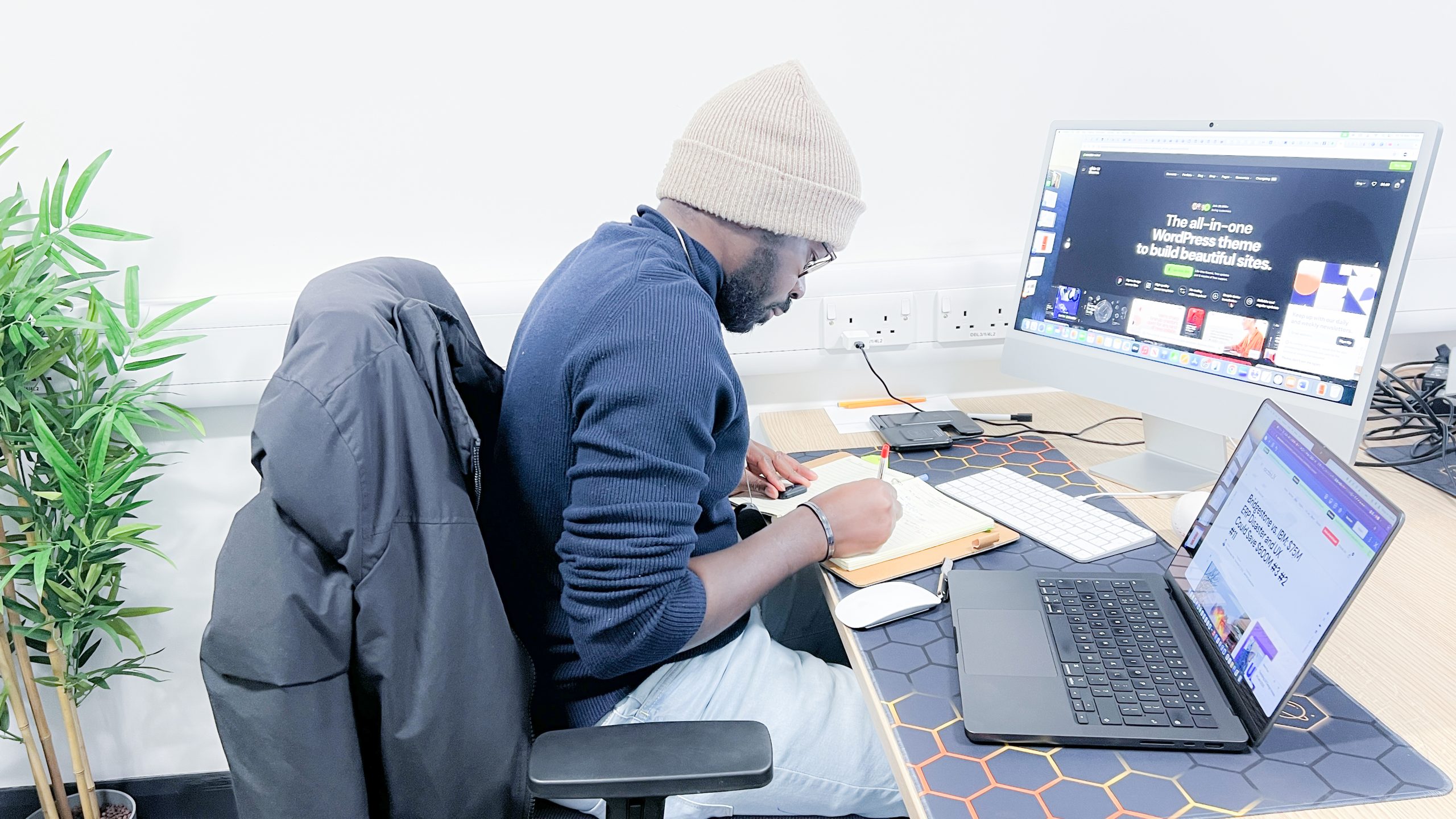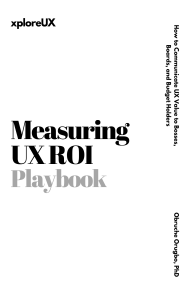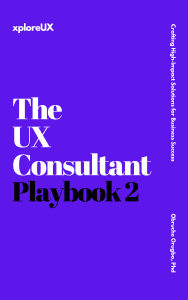
UX consulting is evolving in a world where AI and data are becoming integral to product development. As organizations collect vast amounts of user data and deploy AI tools, UX consultants find new ways to craft user experiences grounded in evidence and augmented by automation. At the same time, emerging practices like vibe coding – using AI to generate working code from natural language prompts – promise to radically accelerate how we build prototypes and Minimum Viable Products (MVPs). This convergence of UX, data, and AI is reshaping how products go from concept to market. In this post, we’ll explore how data-driven design and AI-powered development (including vibe coding) are impacting product development, and what these changes mean for UX practitioners. Throughout, we’ll keep a practical lens on MVPs, product readiness for market, and the evolving role of UX consulting in this new paradigm.
Modern UX consulting increasingly relies on data and AI to inform design decisions. Gone are the days when designers had to rely solely on periodic user research and gut instinct. Today, UX teams can leverage AI analytics to observe user behavior in real time and predict issues before they affect users. As one 2025 industry article notes, UX teams can now monitor exactly how users navigate interfaces – what they skip, where they drop off, and what they prefer – “before the damage shows up in churn.” With AI-based tools, product teams are moving from design decisions based on guesswork to decisions based on evidence and live user patterns.
This data-driven approach means product development is more iterative and responsive. AI can analyze usage data and surface “predictive signals that show friction before abandonment occurs,” helping teams address UX problems early. For example, AI-driven analytics might reveal that users consistently abandon a signup flow at a certain step, prompting designers to fix that pain point before launch. In practice, AI now supports UX work by automating many analytical tasks: it can perform behavior analysis across sessions, suggest prototype improvements, prioritize features based on real user behavior, and even personalize interfaces on the fly. The result is that UX design is becoming a “living system that adjusts with usage” rather than a static pre-launch phase.
For UX consultants, this evolution underscores the importance of integrating data analysis into the design process. It’s now feasible to test and validate design hypotheses much faster. UX consulting engagements often include analyzing user metrics, running AI-enabled A/B tests, and leveraging predictive insights to guide product design. The benefit is twofold: users get more finely tuned experiences, and businesses reduce the risk of costly post-launch fixes. In short, AI has become “not a shortcut but a planning partner” in UX – helping teams shift from intuition-led to evidence-led design.
Alongside data-driven design, vibe coding has emerged as a game-changer for how products are prototyped and built. Vibe coding refers to an AI-assisted approach where a human describes what they want to build in natural language, and an AI (often a large language model) generates the code to make it happen. The term was popularized in early 2025 by AI pioneer Andrej Karpathy, capturing the idea that you can “simply describe what you want in natural language, and AI generates the code… No more syntax struggles… Just vibes.” In essence, vibe coding is prompt-driven product development using generative AI and no-code tools to produce working software from plain-language prompts.
The implications of vibe coding for product development are significant. It drastically reduces development time, allowing teams to go from an idea to a functional prototype at unprecedented speed. Traditional software projects involve lengthy cycles of planning, coding, and debugging that can span months. By contrast, vibe coding can “streamline this process by automating the coding step,” enabling founders and designers to focus on refining ideas and testing code that an AI rapidly generates. This means faster MVPs and faster time-to-market. In fact, many startups and small businesses are drawn to vibe coding because it lets them prototype, test, and iterate products rapidly, staying ahead of competitors by launching updates in days or weeks instead of months.
One of the most powerful aspects of vibe coding is how it opens up app creation to people without traditional coding skills. Non-technical entrepreneurs, product managers, and UX designers can “describe their ideas in natural language and receive working code in return”, making development accessible to a much wider pool of innovators. For instance, a UX consultant with a concept for a new feature can use a vibe coding tool to generate a prototype interface and functionality by simply conversing with an AI. This lowers the barrier between the design vision and a testable product. Indeed, vibe coding has enabled some creators to launch real products incredibly quickly – there are reports of developers building and deploying a web app in just hours using these techniques. When coding becomes this fast and easy, getting an MVP in front of users is no longer the hardest part of product development.
However, this new speed comes with caveats. While vibe coding excels at whipping up prototypes and hackathon-speed MVPs, it’s not yet a wholesale replacement for traditional engineering when it comes to scaling a product. AI-generated code can be messy or inefficient in the long run – a Microsoft engineer bluntly noted that large language models are “not good at maintaining or extending projects” and often produce “nonsense content” when requirements get complex. In other words, vibe coding might get you a working app that’s great for a demo or initial user testing, but that code may not be robust or secure enough for a production-ready product without further expert oversight. The Product People consulting group puts it succinctly: vibe coding is “a discovery and prototyping accelerator” but “not a substitute for engineering when you need scale, robust security, or complex backend architectures.” UX consultants should keep this in mind – the goal is to leverage vibe coding for speed and iteration, while planning for proper engineering cycles to harden any successful MVP into a reliable market-ready product.
With AI and vibe coding accelerating development, the journey from MVP to a market-ready product is shorter than ever. Teams can spin up a minimum viable product quickly, but success still hinges on building the right product for the right problem. In fact, as development bottlenecks shrink, a new challenge becomes clear: ensuring that what’s being built truly addresses a real user need with a good user experience. A tech entrepreneur recently observed, “If you have an idea, you’re only a few prompts away from a product.” The limiting factor is “no longer development speed — it’s knowing which problems are worth solving.”
In other words, just because we can build something fast doesn’t guarantee it will succeed – we need strategic insight into user needs and business value. This is precisely where UX consulting plays a critical role. UX professionals are trained to research users, identify pain points, and test assumptions. Those skills are more crucial than ever to decide which MVPs should be built in the first place and how to refine them into products that truly fit the market.
Once an MVP is built via vibe coding or other rapid methods, data and UX research should guide its evolution. Agile teams can deploy a prototype to real users, gather usage analytics and feedback, then quickly iterate. AI tools assist in this stage as well – for example, by clustering user feedback or usage patterns to highlight which features are actually used and which are causing confusion. A UX consultant might analyze this data to recommend design changes before the product is scaled up. Because AI can deliver these insights almost in real time, teams can adjust the product’s design and functionality on the fly, rather than waiting weeks for a user research study. This tight feedback loop ensures that by the time the product is ready for a wider market launch, many UX issues have been ironed out. Fast AI-driven prototyping paired with continuous user feedback creates a powerful cycle: build quickly, measure relentlessly, and learn what truly delivers value to users.
That said, speed must be balanced with strategy and quality. Rushing an MVP to market without thoughtful design can backfire if the user experience is poor. It remains essential to invest time in UX fundamentals like clear information architecture, accessible interfaces, and thorough usability testing. Rapid development should not mean skipping these steps; rather, it means we can do them more frequently and earlier.
Even with AI assistance, product readiness for market requires polish and reliability – aspects that benefit from human oversight. UX consultants often advocate for a phased approach: use vibe coding to get a prototype in users’ hands quickly, use data to validate the concept, and then gradually refine the product into a production-ready state with the appropriate engineering rigor and UX enhancements. By blending AI-enabled speed with human-centered strategy, teams can shorten time-to-market anddeliver a product that meets real user needs.
The advent of data-centric design and AI-powered development is transforming the role of the UX practitioner. Far from making UX skills obsolete, these changes make UX consulting insights more important – but they do require UX professionals to adapt. Here are several key implications for UX practitioners:
- Embrace AI as a Design Partner: UX professionals should view AI as a powerful assistant to boost their capabilities. Generative AI can serve as a content writer, an ideation partner, or even a design assistant. For instance, AI can draft interface copy or create multiple design variations in seconds. The savvy UX consultant uses these capabilities to explore more ideas faster, while still applying a critical eye to choose what works best. Importantly, designers must guide and supervise the AI’s output – much like overseeing a talented intern – to ensure the results align with user needs and project goals. In practice, this might mean refining AI-generated prototypes or double-checking AI-derived insights against real user context.
- Expand Your Skill Set (but Keep the Core): As vibe coding and automation blur the lines between roles, UX practitioners may find themselves taking on broader tasks. It’s increasingly possible that “designers can’t simply hand off mockups — they’ll need to implement their designs,” producing functional prototypes via vibe coding tools. Similarly, product managers and consultants might dive into light development or data analysis thanks to AI tools. Embracing this “Swiss Army knife” expectation means learning new skills (like prompt engineering, basic coding, or analytics) to remain versatile. However, core UX skills remain irreplaceable. In the age of AI, success still depends on deeply understanding users and crafting experiences with empathy and creativity. As one expert put it, “AI can help us execute that vision more efficiently but can’t replace the human spark that drives genuinely transformative products.” Understanding human behavior, asking the right questions, and having design intuition are fundamental skills that AI cannot substitutenngroup.com. UX practitioners should double down on these strengths.
- Focus on Problems and People, Not just Features: With technology hurdles lower, the true value of a UX professional is in identifying the right problems to solve and ensuring the solution actually delights users. UX consultants should lead in user research, problem discovery, and aligning products with user needs. It’s telling that in this AI-fueled era, “what separates good products from great ones is rarely technical perfection — it’s the human touch… and empathetic design that anticipates user needs.” Practically, this means spending time with users, leveraging data to understand their pain points, and advocating for user-centric changes throughout the product lifecycle. The UX role is expanding to become more strategic: guiding product decisions so that the team is building the right product, not just building the product right.
- Maintain Ethical and Critical Oversight: AI and data-driven algorithms introduce new ethical considerations in design. UX practitioners must be the voice ensuring that AI usage in products is transparent, fair, and respects user privacy. Moreover, relying on AI for design or code can sometimes produce skewed results or “hidden complexities”. UX professionals should remain critical thinkers: validate AI outputs through user testing, watch out for biases in data interpretations, and be ready to pull the plug on an AI-generated feature if it confuses or harms users. Keeping a user-first mindset will prevent blindly following AI suggestions and foster more responsible innovation.
In summary, UX consulting in the age of AI involves a balancing act. On one hand, practitioners need to harness new tools – incorporating data analytics, mastering prompt-based prototyping, and broadening their technical know-how. On the other hand, they must champion the human element of design – empathy, creativity, and ethical responsibility – even more strongly. The most valuable UX professionals will be those who can combine AI-driven efficiency with human-centered insight.
AI, data, and vibe coding are undeniably changing how products are developed, and by extension how UX consultants do their work. These technologies empower us to build and learn faster than ever.
A prototype that once took months of engineering can now be generated in a day, and user behavior data that once took weeks to gather can now stream in real time. For UX practitioners, this is an opportunity to drive product innovation with unprecedented agility. By integrating data-driven insights and AI tools into our workflow, we can validate ideas early, iterate rapidly, and back our design decisions with evidence. At the same time, the essence of good UX remains the same – understanding users deeply and crafting solutions that genuinely improve their lives. As one design leader emphasized, the best outcomes arise from combining “AI efficiency and human ingenuity.”
UX consulting will continue to be about marrying technological possibilities with human-centered thinking. By doing so, we ensure that faster product development doesn’t come at the cost of user experience quality. Instead, it can lead to better products – ones that are not only built faster, but built right for the people who use them.
- Pete Sena (2025). “Cracking the code of vibe coding.” UX Collectiveuxdesign.ccuxdesign.cc.
- Hamza Atique (2025). “Introduction to Vibe Coding for Product Managers: From Idea to MVP.” Product People Bloggetproductpeople.comgetproductpeople.com.
- Muhammad Bin Habib (2025). “How AI Is Transforming UX Design and Product Experience Planning in 2025.”UXmattersuxmatters.comuxmatters.com.
- Salesforce SMB Team (2025). “Vibe Coding Tips For Startups: How To Build Your Product Faster.” Salesforce Blogsalesforce.comsalesforce.com.
- Tanner Kohler (2025). “Using AI for UX Work: Study Guide.” Nielsen Norman Groupnngroup.comnngroup.com.







